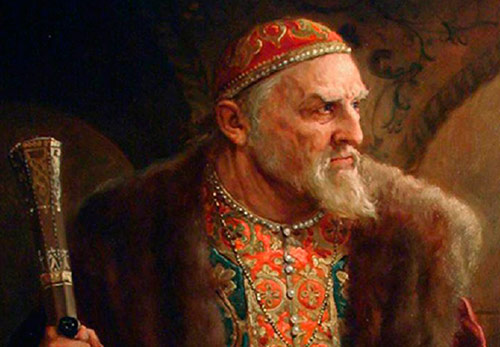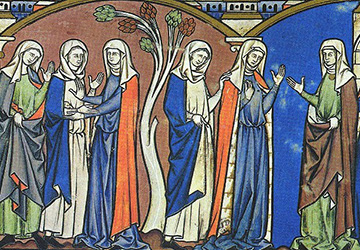Fashion history
Niqab - history and photos of Muslim girls in Niqab
Niqab is the headdress of women professing Islam. The headdress that causes the greatest controversy, both among Muslims themselves and in Europe. For example, in France and Belgium there is a legal ban on wearing the niqab.
Niqab as a subject of legislative and religious controversy
Recently, the European Court of Human Rights recognized the Belgian law banning the wearing of the niqab, adopted back in 2011, as not violating human rights. Two Belgian citizens professing Islam applied to the European Court of Human Rights. According to them, the law banning the wearing of the niqab violated their right to freedom of religion.

The niqabs were also banned in Muslim countries. For example, in 2009 in Egypt, the administrations of some universities banned their students from coming to exams in the niqab.
At the same time, the need to wear a niqab in accordance with the interpretations of the text of the Koran is also a controversial point. Both the Qur'an and the Sunnah (a sacred tradition describing examples of the life of the Prophet Muhammad) do not explicitly indicate whether women professing Islam are required to wear the niqab. However, the wives of the Prophet Muhammad wore niqab.
If you read the threads of Islamic forums regarding the obligation or non-obligation to wear a niqab, then you can, for example, come across information that, according to the Koran, women can leave their face open. And for the wives of the prophet there were some rules that did not work for other women. For example, his wives could not get married again after the death of the Prophet Muhammad. Other women are allowed to do this. Perhaps the same is true for the niqab.

Woman in niqab - only eyes open
Niqab is one of the most face-covering headdresses of Muslim women. A stricter headdress compared to the niqab, only the burqa. The burqa is a wide robe with a hair mesh covering the face and long sleeves. The widespread wearing of the burqa throughout history was mainly among women in Afghanistan and Central Asia. Like the niqab, the burqa is prohibited by law in Belgium and France.
Headdresses of Muslim women are more open than the niqab. veil and hijab... The veil is a veil that hides the figure of a woman from head to toe, but at the same time the face remains open. A hijab is a scarf that covers the head, neck and shoulders.
The niqab is a thin cloth headdress with a slit for the eyes that covers both the head and the face of the woman.
That is, the only exposed part of the face when wearing the niqab is the eyes. At the same time, sometimes a veil from a piece of light transparent fabric is sewn in the eye area of the niqab. Thus, the eyes are also hidden under the fabric, but the visibility is retained.
By the way, clothes like the niqab can be very comfortable in the desert. Firstly, such clothing protects from sand, especially the eyes, and secondly, from heat.

The history of the niqab
Both male and female, now considered Muslim, the costume was historically formed as the clothing of people living in the desert. And, accordingly, the clothes were selected for the weather conditions.
Including the niqab. Or the men's headdress keffiyeh - a scarf that served to protect the head and face from the sun and sand. With the advent of Islam, the clothing of the inhabitants of the desert has its own symbolic component.

Sewing niqab for Muslim girls
Most often, the niqab consisted of a bandage tied on the forehead with straps at the back. This bandage was made of dense fabric.
Two rectangular scarves were sewn to the bandage. A wider scarf was sewn on at the back. His goal was to hide his hair. A smaller scarf with a slit for the eyes was sewn to the front of the headband.Sometimes a transparent strip of fabric was sewn into the eye slit.
The niqab was traditionally sewn from black fabric. However, there are also niqabs of other colors - blue, white and other colors. In some cases, the niqab can be decorated with gold elements, precious stones and other decor - it all depends on the desires and capabilities of the girl and her family.


Niqab is not only worn in Islam
But it is not only in Islam that women wear the niqab. There are also women who practice Judaism, who also wear a headdress that completely covers their head and face.
It is a small community of ultra-Orthodox women living in Israel. You can meet women dressed in niqab in some suburbs of Jerusalem, which are inhabited by Orthodox Jews.
At the same time, historically, women professing Judaism did not wear the niqab. Is that only Jewish women who once lived in the state of Yemen, the main population of which is Muslim. The emergence of the niqab in this case is associated with a particularly harsh interpretation of the principle of "tsniut" (modesty in dress and behavior) existing in Judaism. And many, including Orthodox, rabbis regard the wearing of the niqab by the Jews extremely negatively.
Many condemn the niqab and consider this headdress to be relics of the past and savagery. But in reality, niqab does not harm many Muslim women, and even helps. In hot eastern countries, the niqab still protects the face from the scorching sun, sand and dust.











Tell friends:
Comments and Reviews
Add a comment
Rating news
Shades of clothing that make women look younger
What shades of hair make women younger: rules and photos
Funny wedding dresses - photos and ideas
12 most expensive down jackets for the winter
How to look 25 at 40: tips from supermodels
Beautiful schoolgirls
Anti-aging haircuts and hairstyles for women
Fashionable skirts for autumn and winter
Fashionable women's trousers for the cold season
Fashionable and stylish sandals for summer 2020
Spring-summer 2021
 Fashionable dresses and tops with thin spaghetti straps
Fashionable dresses and tops with thin spaghetti straps
 Bandana tops: how to wear stylishly and beautifully
Bandana tops: how to wear stylishly and beautifully
 How to put together the perfect men's wardrobe for the summer
How to put together the perfect men's wardrobe for the summer
 Fashionable shorts for spring-summer 2021
Fashionable shorts for spring-summer 2021
 Fashionable skirts for spring-summer 2021: a guide to online shopping
Fashionable skirts for spring-summer 2021: a guide to online shopping
 The most fashionable dresses spring-summer 2021: styles and colors
The most fashionable dresses spring-summer 2021: styles and colors
 Fashionable total look 2021: ideas of images and trends
Fashionable total look 2021: ideas of images and trends





